I want to walk you through a project we did a little while back for a well-known Atlanta-based herbalist, Sarah Corbett of Rowan and Sage. We had the pleasure of working with her to design her space to grow tons of food and medicine for her family and her herbal practice. What was particularly inspiring about this project was a) how incredibly involved she was in the plant choices b) her ongoing interaction with her growing space, and c) how she prioritized stewarding the empty land next door, as well as the stream behind her property as a manner of respect and reciprocity.
THE SITE:
Like many sites throughout Atlanta, her space initially had some underutilized full-sun lawn space, perfect for growing many medicinal and edible plants. Like many landscapes we encounter, there was a bit of drainage that needed to be addressed, as the downspouts were dumping at the house’s foundation and causing moisture in the crawlspace. There was also some erosion and exposed subsoil from overland runoff. Our primary directives were to create functional growing spaces with many microclimates that could accommodate a wide variety of medicinal and edible plants while addressing stormwater in a functional way that integrates with the space’s overall vision.
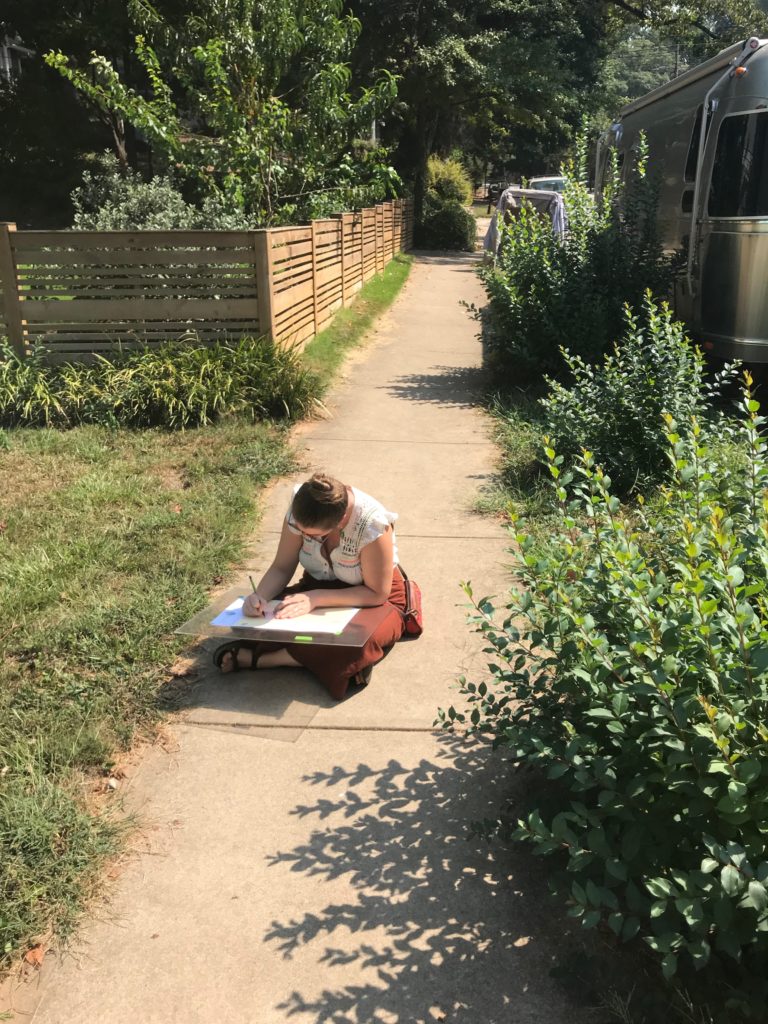
Front Yard Assessment
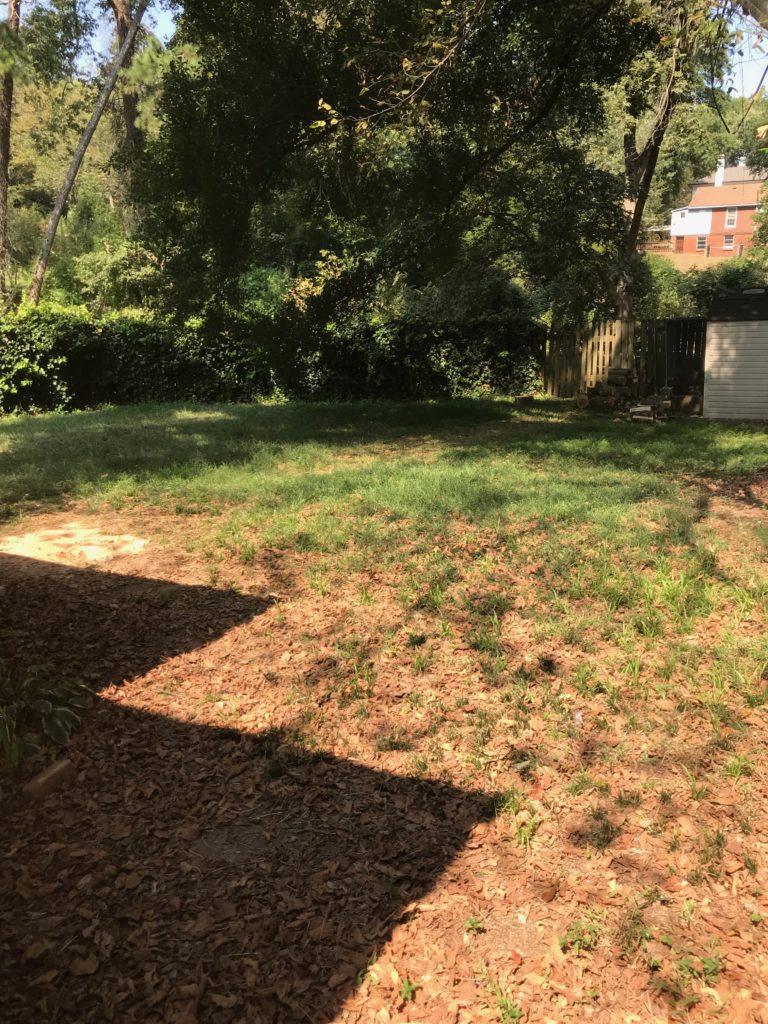
Existing conditions: Backyard with exposed subsoil from erosion
THE FEATURES:
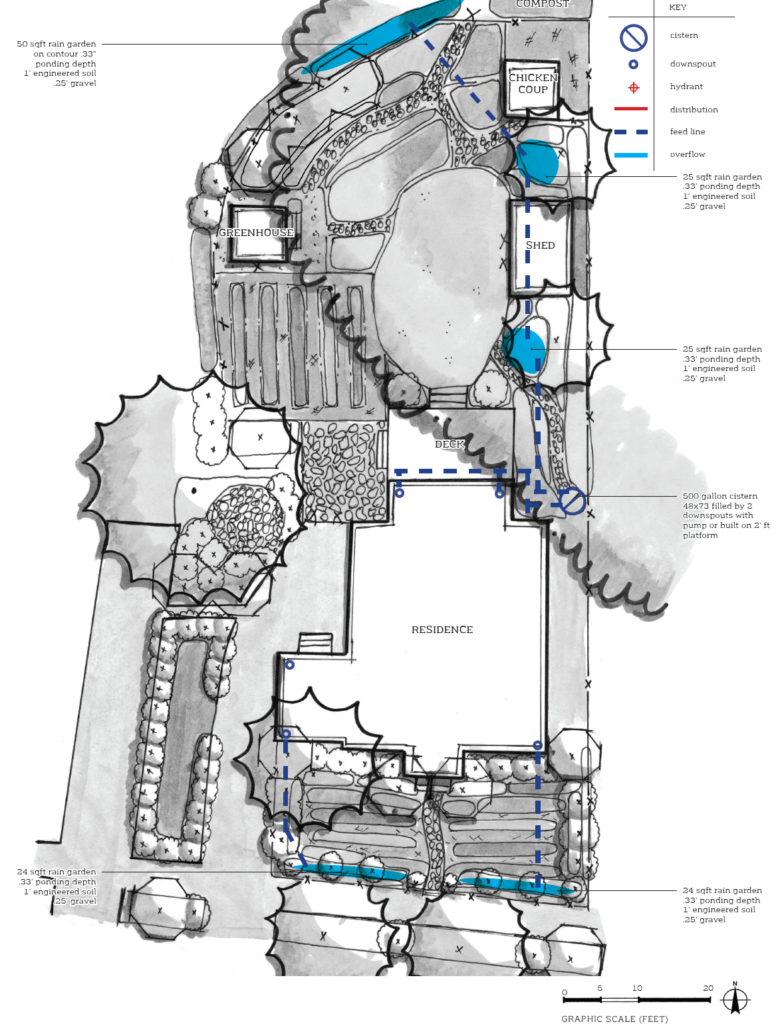
Water Detail
Water
We directed downspouts to rain gardens in the front yard for water management, which hold water during rains and allow it to sink into the soil. Then we planted rain gardens with species that can thrive in flood and drought conditions since rain gardens hold enough water to submerge the plants during heavy rains and drain entirely during times of no rain. The backyard water follows a similar pattern by directing downspouts to rain gardens that overflow into a contoured swale. The water can sheet flow evenly from there toward the creek, leaving soils hydrated and stabilized.
Soil
With an abundance of downed branches and wood on-site, we utilized hugel beds as a means of restoring soil and creating growing space for large row crops, herbs, and veggies. These are sites where the soil was eroding, and as they are laid out more-or-less on contour, they slow the flow of water and allow it to sink into the soil, making it available for the roots of crops. This ultimately reduces the need to irrigate crops, as well, as the wood functions like a sponge holding water and releasing it slowly to the roots of plants.
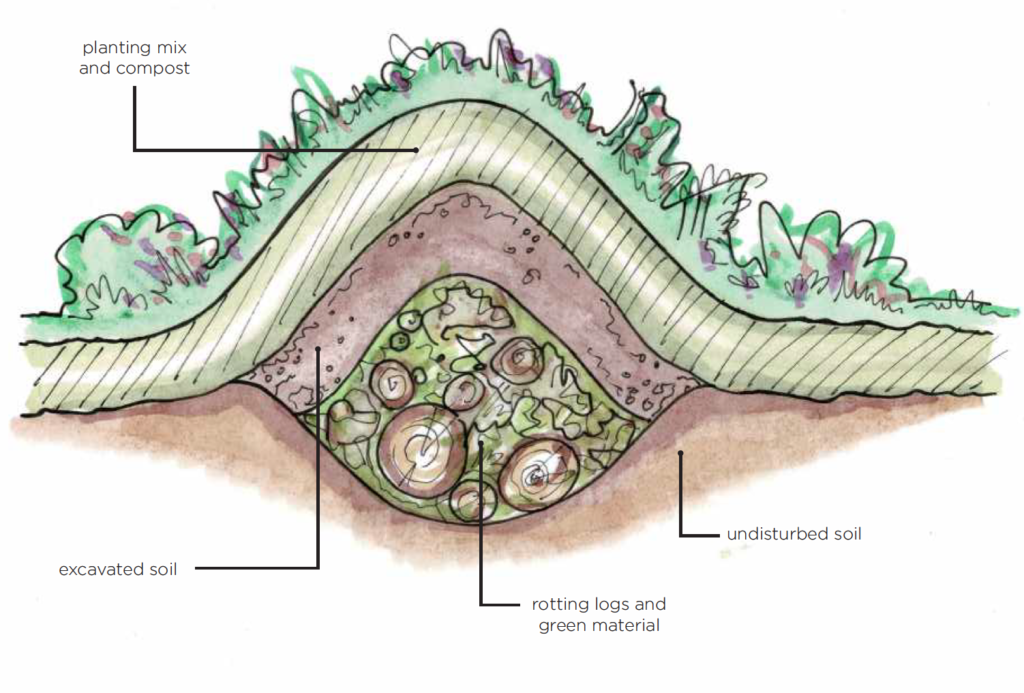
Hugel bed cross-section
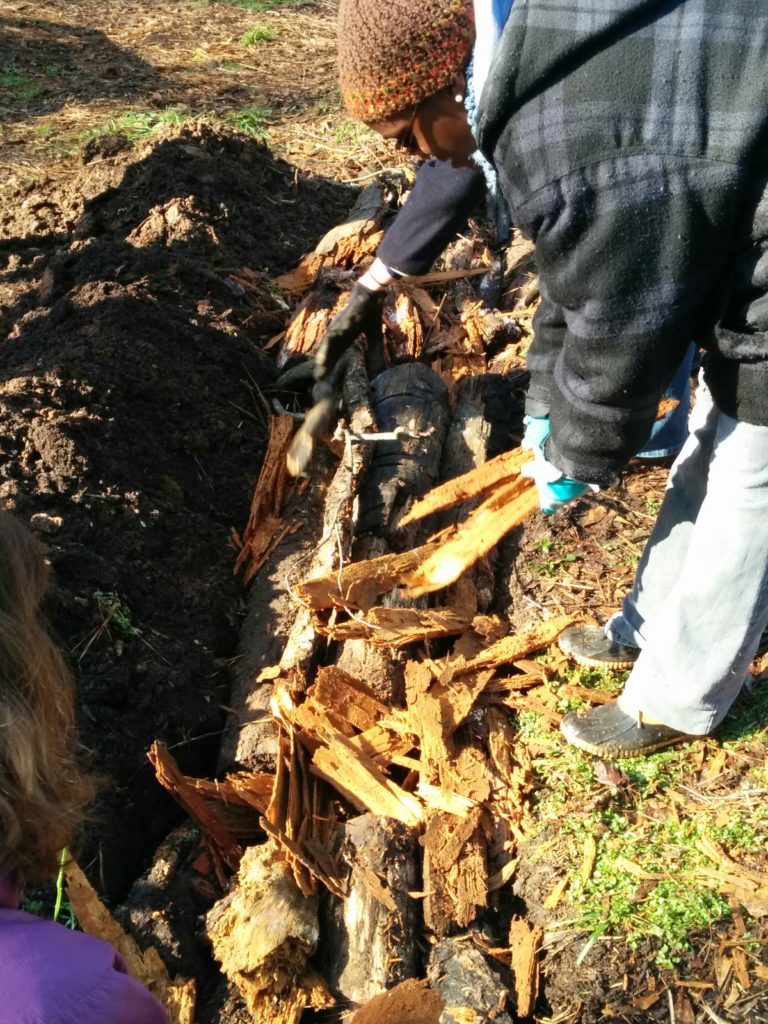
Hugel bed filled with rotting wood…
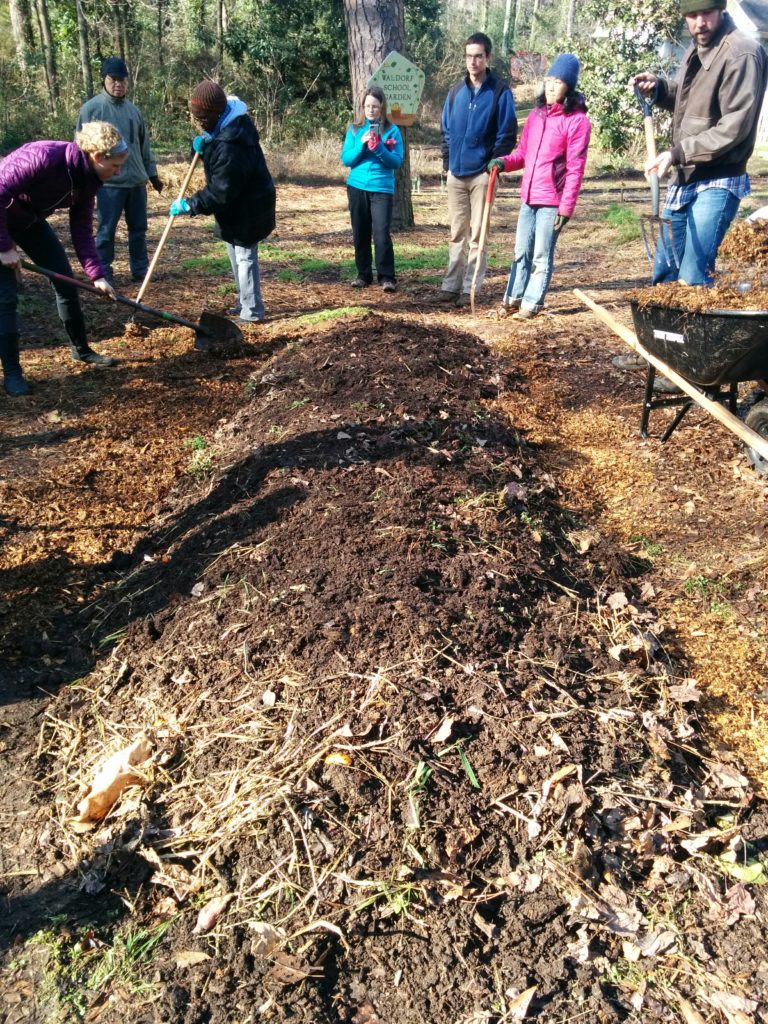
…and covered with soil and compost.
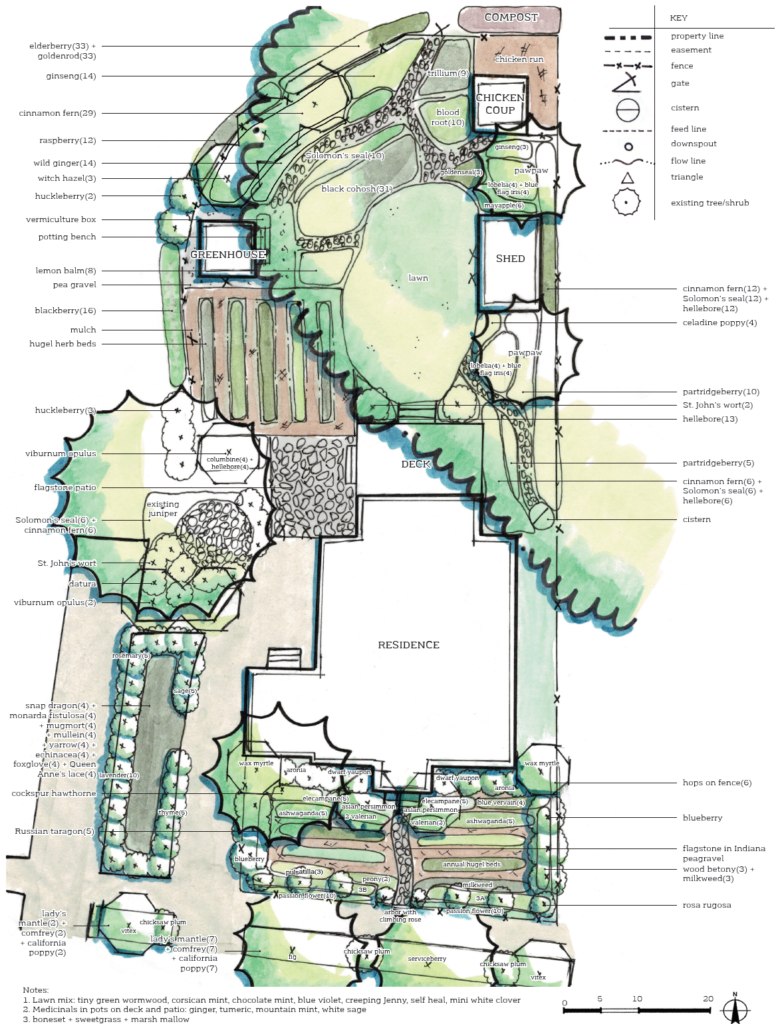
Plants
As an herbalist, Sarah’s plant requests were incredibly diverse. She wanted to utilize the niches and microclimates on her site to grow as many useful plants for her herb practice and apothecary as possible. We augmented these plant choices with native and edible plants that thrive in her site’s conditions and boost the overall soil health and resilience. Meadow species such as echinacea and goldenrod, woodland species such as bloodroot and cohosh, showy florals such as rose and vitex⏤this garden sanctuary is a thriving example of form meeting function to restore human and ecological health.
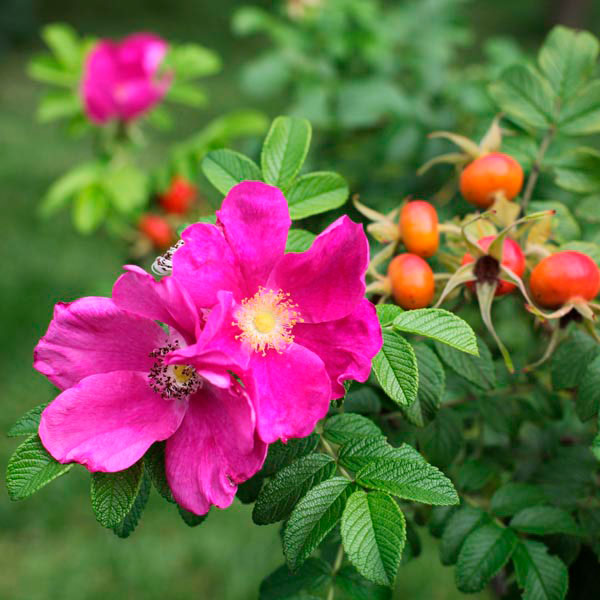
Rosa rugosa
If you want to know more about stewardship practices that build resilience in your yard, I have a FREE masterclass⏤ The 3 Pillars of a Regenerative Landscape⏤coming up soon. You can register here if you’d like to learn simple solutions to implement in our yards to make a positive impact easily. We’ll cover techniques for working with water (you only need a shovel!), how to build soil without the need for fertilizers or costly inputs, and how to choose plants that work together to support the ecology of your land (and feed you, too!).